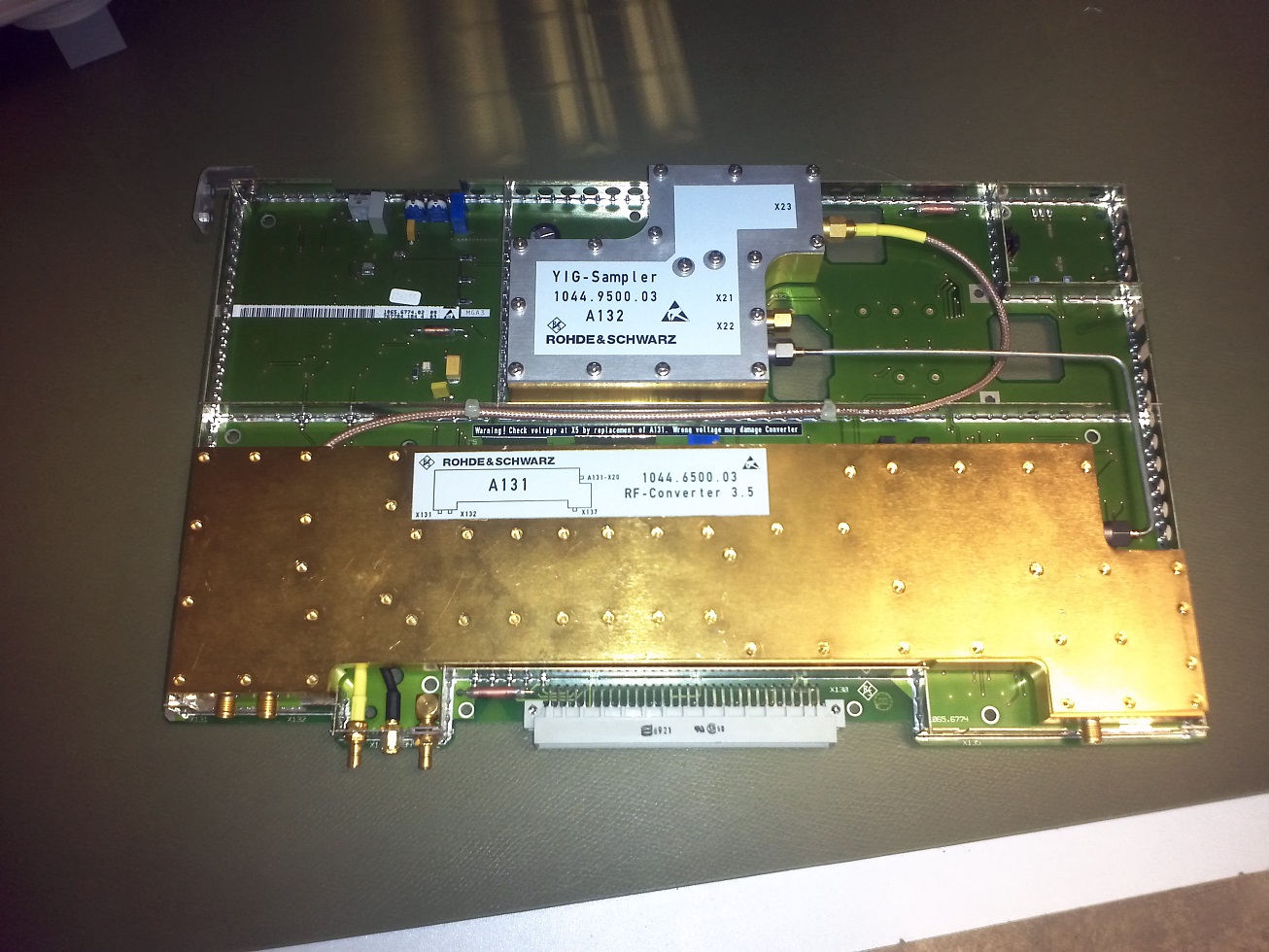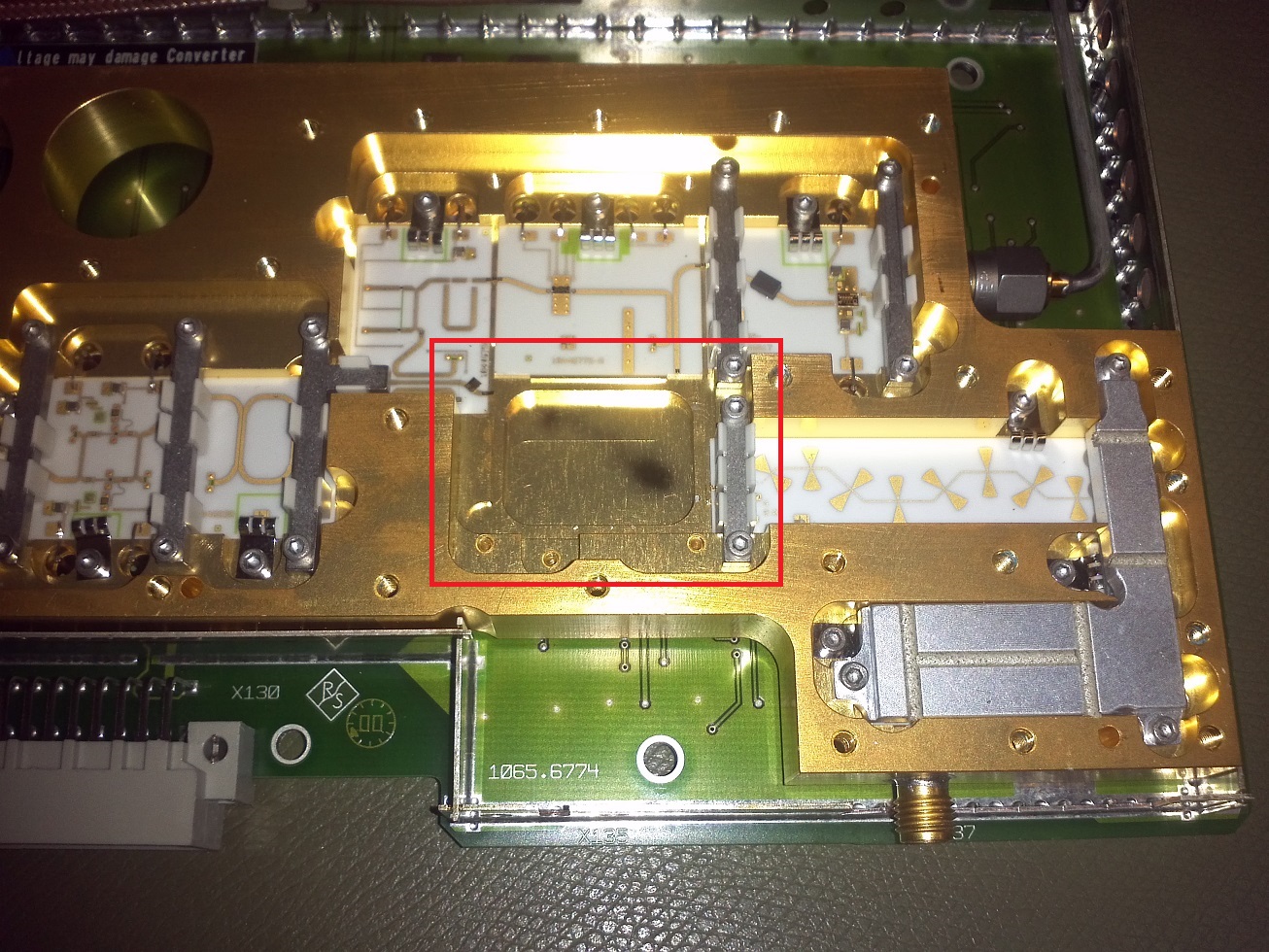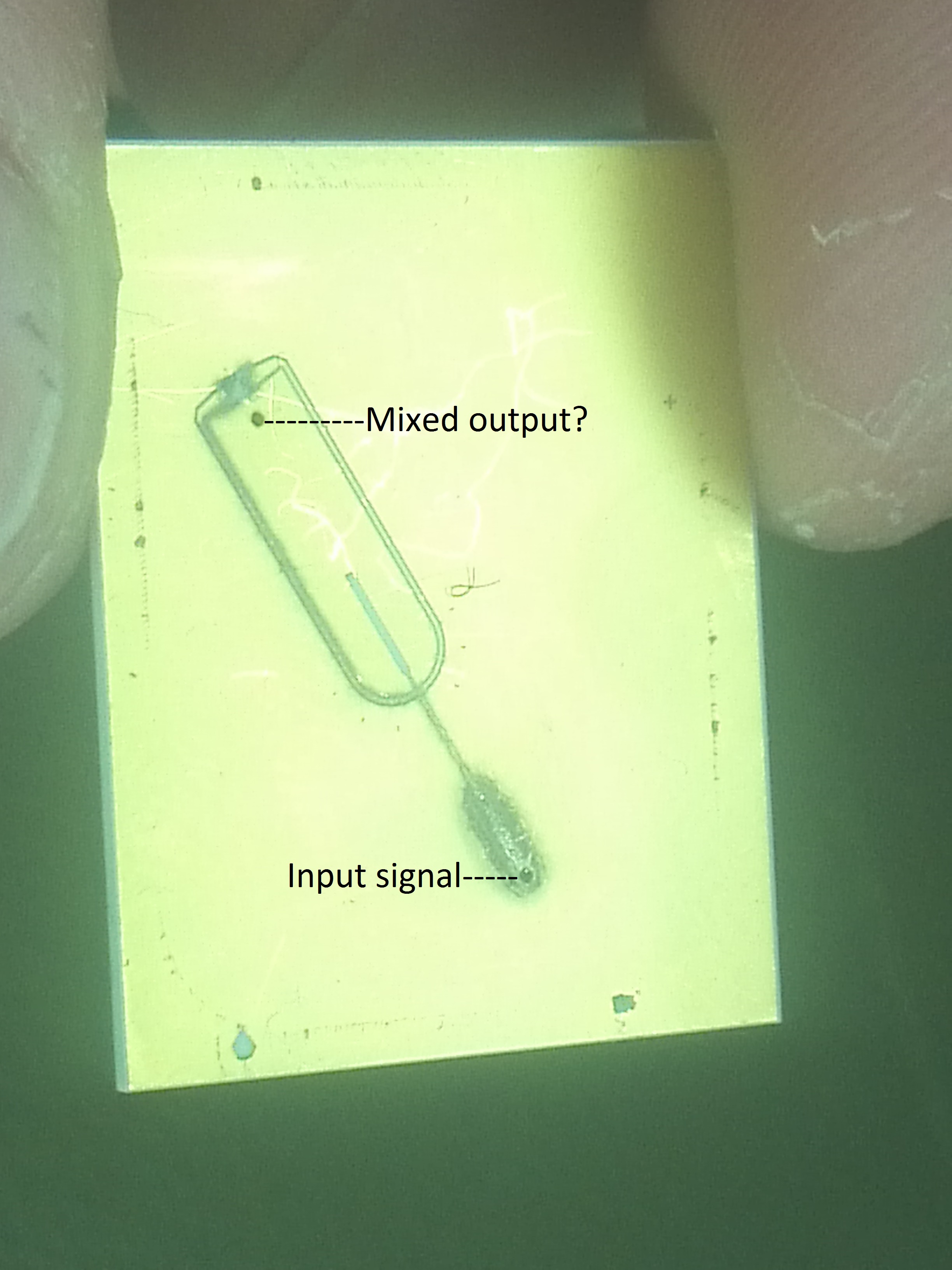Spectrum analyzer frontend mixer?
At first, I'm just a recent graduate of telecommunications and electronics engineering and have little real life experience, especially with RF equipment...
I have a Rohde&Schwarz FSEA30 spectrum analyser, that was failing self-test by stating an RF-converter fault. Since the part would cost as much as a new analyzer, I was trying to detect the problem myself. Tons of googling lead to the idea of "frontend mixer" burning out due to excesive power at the input, and I think this is actually the problem in this particular case...
The thing is, that most of the time spectrum analysers have the frontend mixer as a separate unit, but this one (if I understand correctly) has it embedded in one big metal case together with further ~"RF conversion hardware" (see pictures).
I found a burned piece of pcb that looks like it is some kind of an "inductive mixing pcb circuit"? It does not have any kind of active or passive smd elements, just a copper tracing and some tiny wire bonding.
Having hopes that this is the only problem and the further active elements was not damaged, I would like to try to replicate this small piece of pcb, but I have no knowledge of how this thing should be actually working, how to bond these parts of tracing together (apparently they were)... If you could share any general knowledge about RF signal mixing hardware I might be working in a bit closer circuit of uncertainty.
There is a photo made with a digital microscope and some more photos. I can see the approximate shape of a burned out tracing, but should the input signal be DC bonded to the output? Or should the output be just some kind of induction of both signals, etc..? Any suggestions are greatly appreciated.






I am not familiar with this kind of mixer, but most RF/microwave spectrum analyzers use sensitive wideband mixers that are very vulnerable. This means that the input should always pass through an attenuator to protect the mixer. You have mentioned that most sp.analyzers use replaceable mixers, unfortunately this one does not.
Modern analyzers use a software control that starts with a protective input attenuator, and would not allow a strong input signal pass to the mixer. Problem is that often such strong signals come from outside the displayed frequency band, and often the DC input across 50 Ohms can break the mixer or input attenuator.
I would not try to repair such damaged mixer as the result will usually not be good. Replacement is expensive, so please, use a good spectrum analyzer with an extreme care.
If this model allows, try to use an external mixer (LO output must be provided); then such mixer can be replaced easier.
Because of the total frequency coverage of a SA, the first IF is above the input range, i.e. if its 0 - 1GHZ, the first IF might be 1.2 GHZ. I would guess that at the "output" end there are two diodes, with the input signal in phase via the hairpin, and the LO out of phase due to the phase shift along its length. The junction between the two diodes being the output terminal. Depending on the damage, a jeweller might be able to gold weld broken joints - I have seen this done on open ceramic packages! You really need another SA to figure out if the diodes are OK, it looks like one took a lot more power then the other.
Frank
The best way to request from R&S because they have probably used custom diodes/semiconductors and it's not possible to recover the PCB layout.But R&S will want to repair at their labs. and it will cost you much sure...
I've contacted R&S and, as expected, the reply was to buy a new or refurbished part from them that cost more than a good used analyser, and of course they don't have that small part for sale...
Thanks everybody for the replies, especially chuckey for the ideas! I'll try to figure out what to do, maybe I'll try to replicate the part just to see what will happen, otherwise this nice SA going to junkyard...
- Analogue spectrum analyzer marker and tracking generator plugin
- Trouble with my analyzer ?
- How do I know if a spectrum analyzer is enough to measure an specficic DAC?
- Network analyzer calibration for RF test points
- 60dB attenuator prior to spectrum analyzer, how to?
- Spectrum analyzer range extension and usage
